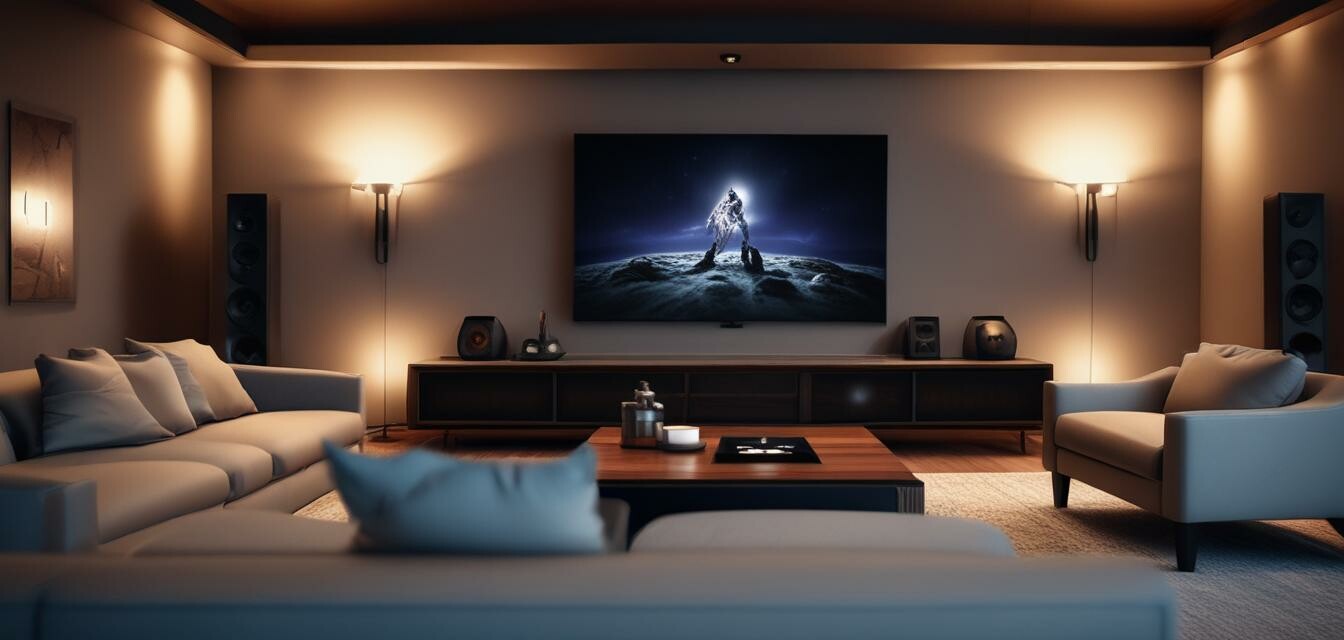
The Rise of Smart Home Integration in Home Theaters
Key Takeaways
- Smart home integration enhances convenience and usability in high-end home theaters.
- Gives users central control over various devices from a single interface.
- Innovative technologies like voice control and automation are rapidly evolving.
- Compatibility with a range of devices including lighting, audio systems, and projectors.
In recent years, the integration of smart home technology has completely transformed how we experience home theaters. Gone are the days of juggling remotes or dealing with complicated wiring. Today, everything is interconnected, leading to a seamless and luxurious audiovisual experience. In this article, we will explore how smart home integration is revolutionizing the high-end home theater experience, enhancing control and usability for users.
The Convenience Factor
Smart home integration enables users to control various devices effortlessly. Imagine setting the mood for movie night with just one tap on your smartphone or a simple voice command. This convenience is changing the way we enjoy our entertainment systems.
| Device | Control Method | Benefits |
|---|---|---|
| Smart TVs | Remote, Voice Control, App | Access streaming content easily |
| Lighting Systems | Smartphone App, Voice Control | Customize atmosphere for different moods |
| Sound Systems | Remote, Smart Speaker | Immersive audio experience |
Centralized Control Systems
Centralized control systems have made managing all home theater technologies simple. Homeowners can now operate multiple devices from a single interface, which simplifies the experience significantly.
Popular Control Systems
- Control4
- Crestron
- Logitech Harmony
These systems can control not just the audio and video devices but also the environmental settings like temperature and lighting.
Voice Control: A Game Changer
Voice-activated control has become increasingly popular within smart home integration. Using devices such as Amazon Echo or Google Home, users can easily manage their home theater systems hands-free.
Pros
- Hands-free operation adds a level of ease
- Quick access to information about the content
- Can control multiple smart devices at once
Cons
- Voice recognition can sometimes fail
- Privacy concerns regarding always-on devices
- Dependency on a stable internet connection
Enhancing the Audio-Visual Experience
With the integration of smart technologies, the quality of audio and visual experiences in home theaters has drastically improved. High-resolution projectors and advanced audio systems can be automated to work in perfect harmony.
Emerging Audio Formats
Be on the lookout for the latest in audio formats. Technologies such as Dolby Atmos are making waves, and more systems are becoming compatible. This allows home theater enthusiasts to enjoy a multi-dimensional sound experience.
Smart Displays and Projectors
Another major trend in home theater setups is the rise of smart displays and projectors that seamlessly integrate with smart home systems, allowing for a more dynamic and adaptable viewing experience.
Future Innovations
The technology behind smart home integration is continuously evolving. Future innovations may include enhanced wireless capabilities and improved compatibility among devices, making high-end installations even easier to use and set up.
Trends to Watch
- Greater emphasis on energy efficiency
- Enhanced inter-device communication
- Emerging immersive technologies like 360-degree sound
Conclusion
Smart home integration is indeed revolutionizing the home theater experience. This technology not only boosts convenience and usability but also enhances the overall enjoyment of entertainment systems. Keeping abreast of these innovations will help users make informed decisions about their setups. For more information on improving your home theater, check our setup tips and explore our comprehensive speakers and sound systems.

